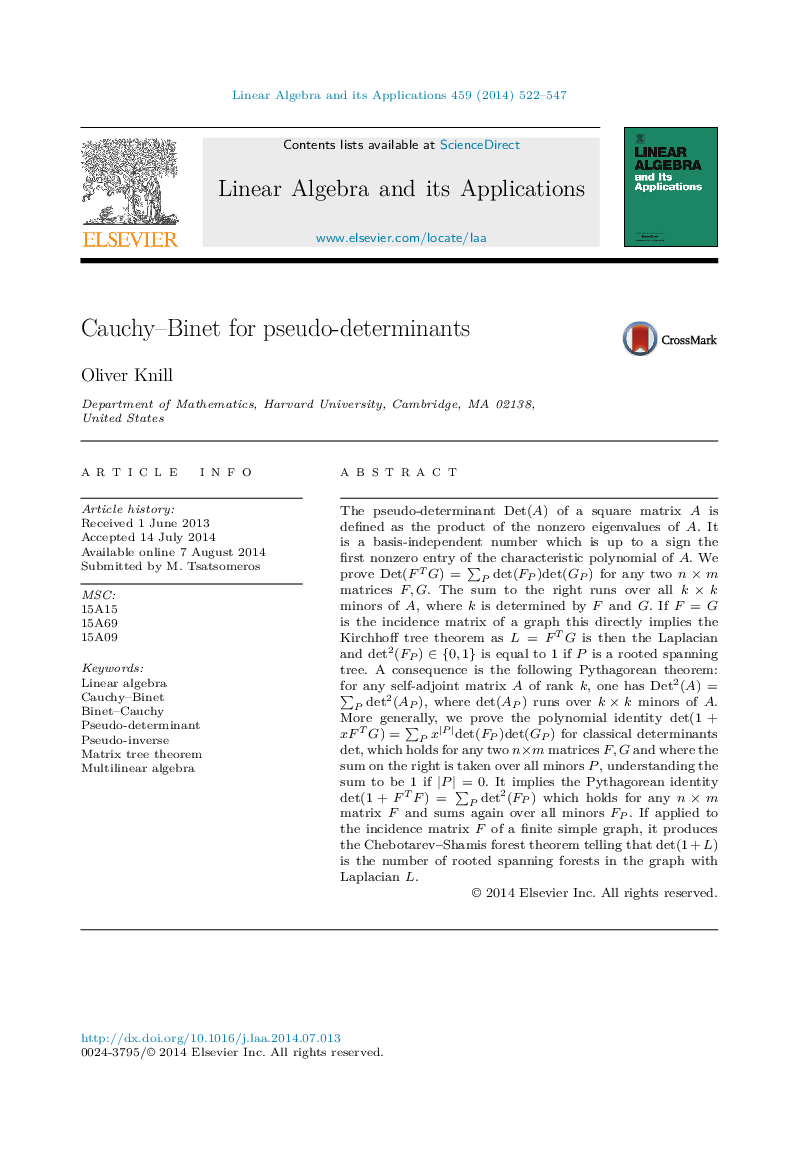| Article ID | Journal | Published Year | Pages | File Type |
|---|---|---|---|---|
| 4599503 | Linear Algebra and its Applications | 2014 | 26 Pages |
The pseudo-determinant Det(A)Det(A) of a square matrix A is defined as the product of the nonzero eigenvalues of A. It is a basis-independent number which is up to a sign the first nonzero entry of the characteristic polynomial of A . We prove Det(FTG)=∑Pdet(FP)det(GP)Det(FTG)=∑Pdet(FP)det(GP) for any two n×mn×m matrices F,GF,G. The sum to the right runs over all k×kk×k minors of A, where k is determined by F and G . If F=GF=G is the incidence matrix of a graph this directly implies the Kirchhoff tree theorem as L=FTGL=FTG is then the Laplacian and det2(FP)∈{0,1}det2(FP)∈{0,1} is equal to 1 if P is a rooted spanning tree. A consequence is the following Pythagorean theorem: for any self-adjoint matrix A of rank k , one has Det2(A)=∑Pdet2(AP)Det2(A)=∑Pdet2(AP), where det(AP)det(AP) runs over k×kk×k minors of A . More generally, we prove the polynomial identity det(1+xFTG)=∑Px|P|det(FP)det(GP)det(1+xFTG)=∑Px|P|det(FP)det(GP) for classical determinants det, which holds for any two n×mn×m matrices F,GF,G and where the sum on the right is taken over all minors P , understanding the sum to be 1 if |P|=0|P|=0. It implies the Pythagorean identity det(1+FTF)=∑Pdet2(FP)det(1+FTF)=∑Pdet2(FP) which holds for any n×mn×m matrix F and sums again over all minors FPFP. If applied to the incidence matrix F of a finite simple graph, it produces the Chebotarev–Shamis forest theorem telling that det(1+L)det(1+L) is the number of rooted spanning forests in the graph with Laplacian L.
